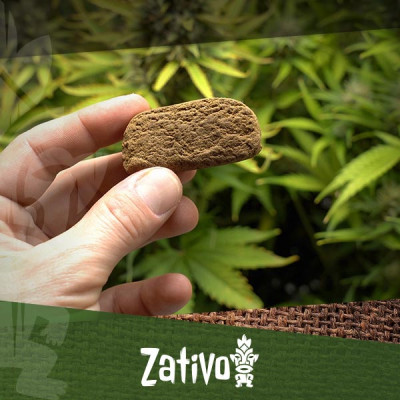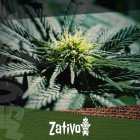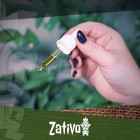Don't have an account?
Register NowYou have to add to cart at least 5 bottles or any program to make checkout.
- BlogWhat’s The Difference Between Weed And Hash?
What’s The Difference Between Weed And Hash?
Published: August 20th, 2023
Categories:
Cannabis Info
For those new to the world of cannabis, there are a lot of different terms to learn. You may have heard many of them in passing, but you might not really know what they mean. In this article, we investigate the differences between weed and hash, two distinct but similar cannabis products.
Hash vs Weed: What’s the Difference?
Put very simply:
• Weed is dried and cured cannabis flower.
• Hash is a product made by separating the trichomes from cannabis flower and compressing them together.
Indeed, this is a very broad definition, and there’s more to it than that.
What Is Hash?
Hash is essentially concentrated cannabis trichomes. Trichomes are the resinous glands that grow on the outside of cannabis flowers, and are where cannabinoids such as THC and CBD are produced. By removing trichomes from the flowers and compressing them, a more concentrated product is made.
Cannabis flowers have an average THC content of between 10 and 20%. Hash, on the other hand, has an average THC content of 30 to 40%. Some forms of highly purified hash can even have a THC content of up to 90%!
There are several ways to make hash, ranging from very basic to quite complex. More on this shortly.
As hash is considerably more potent than cannabis flower, the effects of the former are often considered to be more profound. However, some users note that the high itself is more relaxing and physical as opposed to cerebral.
Hash may also be called:
• Hashish
• Squidgy black
• Black oil
What Is Weed?

In the context of cannabis, weed is the dried and cured flowers of the cannabis plant. Of course, the entire plant can also be called weed, but here we’re referring to the part people buy and get high from.
Weed is covered in trichomes, but it also contains a lot of plant matter that doesn’t contain any THC. Generally, weed has a more herbal flavour than the rich, darker flavours of hash.
The effects of weed can vary greatly, but they are often considered to be more tame than those of hash, and with a headier quality. That said, it ultimately varies depending on the specific cultivar.
Weed has an almost infinite number of names. Here are some of the most common:
• Cannabis
• Marijuana
• Dope
• Grass
• Mary Jane
• Bud
In-Depth: Understanding the Difference Between Hash and Weed
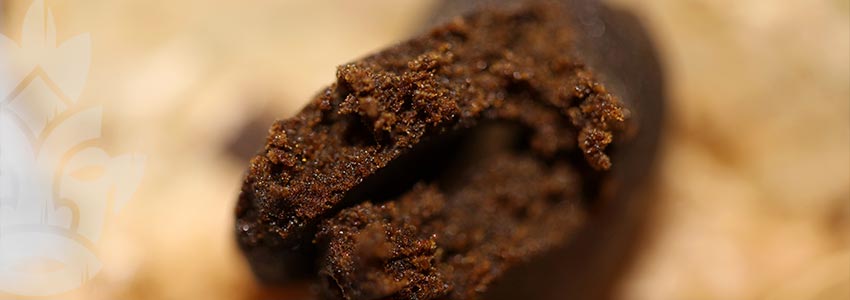
In the following section, we’ll dive a little deeper into the differences between weed and hash, including how they're made, what they taste like, and what effects they may have.
How Is Hash Made?
As hash is ultimately a mass of cannabis trichomes, there are multiple ways to make it, and it can appear in multiple forms. Although all types of cannabis concentrates could be labelled as hash (depending on who you talk to), generally hash refers to cruder forms of concentrated trichomes.
Here are some of the most notable ways to create hashish:
• Charas: This is probably the simplest way to make hash. A traditional Indian method, it involves squeezing and rolling live cannabis flowers between your hands. The heat and friction causes the trichomes to detach from the flower and attach to your hands. Once your hands are coated in resin, they can be rolled together, where the resin will collect into a ball. This is a ball of charas, and is a finished hash product.
• Moroccan hash: This technique is actually used all over the world, but it is famously known as a Moroccan method. It involves placing cannabis flowers on a fine mesh screen and shaking it from side to side. This friction causes the trichomes to detach, fall through the screen, and collect at the bottom. These collected trichomes can then be gathered up and pressed into blocks of hash.
• Bubble hash: This method utilises cold water. You place cannabis flowers in a bucket of cold water and stir them around. The temperature and agitation cause the trichomes to separate from the flower. You then pour the water through some kind of filter, and the trichomes collect as it dries. This can then be pressed into hash.
• Rosin: To make rosin, cannabis flowers are wrapped in baking parchment and pressed between two hot surfaces, such as hair straighteners (when performed at home). The melted resin then collects on the parchment. Once cool, it can be scraped off and vaporized!
Generally, when people buy hash or think of hash, it’s most likely made using the Moroccan method. However, other methods are becoming more popular, especially where cannabis is legal.
How Is Weed Made?
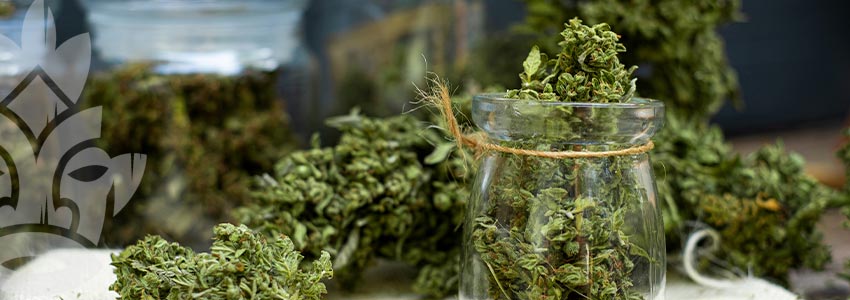
Weed isn’t “made” in the same way as hash, although it does still require a process. It’s not as simple as pulling flowers off a plant and smoking them (they’re too wet).
Once a female cannabis plant is mature, the flowers are harvested. Then, they are dried; usually, they are hung for 10–14 days in a cool, dark room with good airflow. Once they’re suitably dry, they could theoretically be smoked, but to improve their flavour and quality, they are often cured for several weeks.
The simplest way to cure weed is to place it in an airtight jar. This jar should then be “burped” twice a day. This means opening it and letting the humid air out and fresh air in. This process can be repeated for 1–6 weeks, depending on how refined you want the final product to be.
Once curing is complete, you have what most people think of as weed.
Is Weed or Hash Stronger?
Really, the answer to this depends on the specific cultivar and the quality of the process. In general though, hash tends to have a higher concentration of THC compared to weed, and is therefore capable of exhibiting a more intense effect.
Why Is Hash More Relaxing Than Weed?
Though hash contains more THC than weed, it is typically considered to have a more relaxed and physical high. It’s unclear why this is the case, but the majority of the cannabis community seem to agree that hash has more body-centric, narcotic-like effects. Furthermore, some users claim that they experience fewer negative side effects, such as paranoia and anxiety, when using hash.
There are a couple of possible explanations for this.
One is that, as hash is traditionally an Indian or Moroccan product, it is more likely to be made from indica cannabis plants, which contain terpenes and other cannabis constituents that make for a more relaxing body high. That being said, the hash available today is made from a wide range of cannabis cultivars, so it's hard to assert whether the physical effects of old-school hash are retained in the new stock.
Others suggest that as hash is a concentration of trichomes, you get a more powerful entourage effect from it. The entourage effect is the name given to the potential synergy between cannabinoids, terpenes, and other cannabis constituents that occurs when they are consumed together. It's possible that the entourage effect leads to a more balanced and "holistic" high.
How Do You Use Hash and Weed?
Hash and weed can be used in largely the same ways. The preparation and dosing might be slightly different, but both can be:
• Smoked in joints and spliffs
• Smoked in bongs and pipes
• Vaporized
• Cooked into edibles
It's worth noting that some forms of purified hash containing little to no plant matter (such as rosin) can be "dabbed", which is essentially a hybrid of vaping and smoking that involves placing hash on a hot "nail" and inhaling the resulting vapor.
Weed and Hash: Comparison
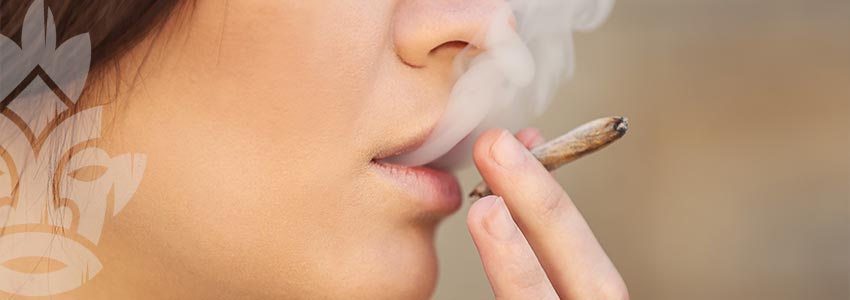
Here’s a quick comparison of hash and weed in terms of effects and flavours. Note that this section is very broad, and that there are no cut-and-dried distinctions.
Flavour
The scents and flavours of hash tend to be:
• Dark
• Heavy
• Earthy
• Spicy
• Incense-like
The scents and flavours of weed tend to be:
• Floral
• Citric
• Fruity
• Pungent
• Sharp
• Sweet
Effects
The effects of hash tend to be:
• Relaxing
• Stoned
• Physical
• Slow
• Chill
• Gently uplifting
The effects of weed are incredibly varied, depending on the strain. They absolutely can be the same as those of hash, but certain strains can also be:
• Energising
• Cerebral
• Motivating
Hash and Weed: Not So Different After All

The products themselves are obviously quite different in appearance, but otherwise they’re not so distinct. Hash usually has an earthier, warmer flavour and more relaxing effects, while weed tends to be lighter and more pungent, and can have a wide range of effects. For people after a really physical high, hash is probably the better option. In terms of how they are used, hash and weed are mostly the same, lending themselves to smoking, vaping, and edibles.
The main differences between the two is how they’re made, their physical form, and their potency. Ultimately, both hash and weed are beloved, and many users enjoy both forms of cannabis, rather than sticking to one over the other.

